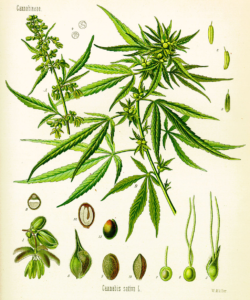It’s so easy to feel overwhelmed by”¦ everything right now.
Climate change, the rise of authoritarianism, the economy, systemic racism, a global pandemic. Social media (which arguably has never been a showcase for the best humanity has on offer) has become a doom scroll. The news headlines aren’t comforting either, obviously, as that’s not their job, but feel even less so this year.
Meanwhile, Life with a capital L keeps happening. We all still have to keep a roof over our heads, some of us have kids to feed and prepare for whatever the hell it is that lies ahead, or parents to support in their old age, or maybe even both. An appalling number of us have to fight daily just for the right to exist.
And worst of all, I think, is that it is the year 2020. There’s something extra galling about the fact that we’re nearly a quarter way through the 21st century and we literally have access to the sum total of the world’s knowledge in our pockets”¦ and yet we seem to be inundated with both egregious ignorance and aggressive gullibility. Never mind a jet pack, I’d be happy just to get everyone on the same damn page: Clean air good, pollution bad.
 On my darker days, I tend to turn to accounts from other people who lived through uncertain or frightening times. Victor Frankl’s Man’s Search for Meaning comes to mind, or going further back, something like Pandaemonium by Humphrey Jennings. An obvious place to look for historical parallels right now is back to our most famous pandemic, even if our perception of those times isn’t entirely accurate. These books and essays don’t offer answers, per se, but they do provide that all important connection: other people have been in a crucible and survived, and maybe you can too.
On my darker days, I tend to turn to accounts from other people who lived through uncertain or frightening times. Victor Frankl’s Man’s Search for Meaning comes to mind, or going further back, something like Pandaemonium by Humphrey Jennings. An obvious place to look for historical parallels right now is back to our most famous pandemic, even if our perception of those times isn’t entirely accurate. These books and essays don’t offer answers, per se, but they do provide that all important connection: other people have been in a crucible and survived, and maybe you can too.
But what can you do beyond just get by? These problems we’re facing seem so big and intractable. You’re just one person, right?
Listen: One person can make a difference.
Here’s how I know. On May 16th, 2020, more than 5000 volunteers in my community, following physical distancing protocols and wearing masks, collected at least 678,200 pounds””yes pounds, and no that amount is not a typo””of food, donated by residents who had been asked to leave a non-perishable item on their porch or front step for collection.
The goal was to restock local food banks, because donations had tailed off due to the pandemic lockdown. Organizers called it the May 16th Miracle, and the whole effort was put together in less than three weeks via social media and the now ubiquitous Zoom.
The Miracle”¦ was just one person’s idea.
It was not a government initiative, it wasn’t put together by a big non-profit organization, and it had no budget for publicity. One person saw that others were hurting, reached out to a few other people who would be able to recognize the same need, and this small group of people then put out the call to the community at large. And wow, did the community respond.
Even better, a neighbouring community was so inspired by the effort that they organized their own miracle and brought in even more donations for their food banks.
I took part in the May 16th Miracle as an area “˜captain,’ and the experience of collecting bag after bag of goods from my neighbours, and then joining the huge convoy en route to a makeshift warehouse has sustained me ever since. I’ve started noticing quiet success stories all over the place: the Facebook gardening group members giddily sharing pictures of the monarch caterpillars they’re now seeing in the gardens they’ve overhauled to include native species; the grassroots pressure that forced universities and other institutions to divest from oil and gas holdings; the proliferation of Pride rainbow crosswalks in even those most conservative of towns; colonial-era statues finally, finally coming down.
Yes, it’s 2020. No, we shouldn’t have to still be fighting these fights. But what you’re doing, however big or small your contribution, is working. Indeed, there wouldn’t be so much pushback if it weren’t.
Keep going. Double down if you can. It matters.
You matter.
 BIO: Chandra Clarke (she/her) is the author of the Pundragon (available August 10), a cli-fi book disguised as a humorous fantasy. You can find her blog at www.chandrakclarke.com or say hi on Twitter at @chandraclarke.
BIO: Chandra Clarke (she/her) is the author of the Pundragon (available August 10), a cli-fi book disguised as a humorous fantasy. You can find her blog at www.chandrakclarke.com or say hi on Twitter at @chandraclarke.
If you’re an author or other fantasy and science fiction creative, and want to do a guest blog post, please check out the guest blog post guidelines. Or if you’re looking for community from other F&SF writers, sign up for the Rambo Academy for Wayward Writers Critclub!









One Response